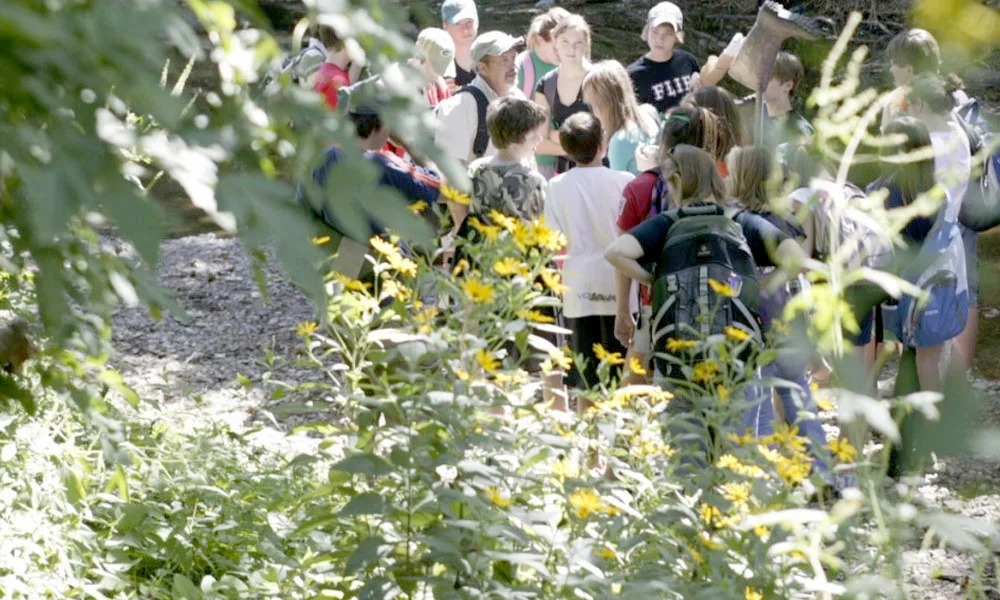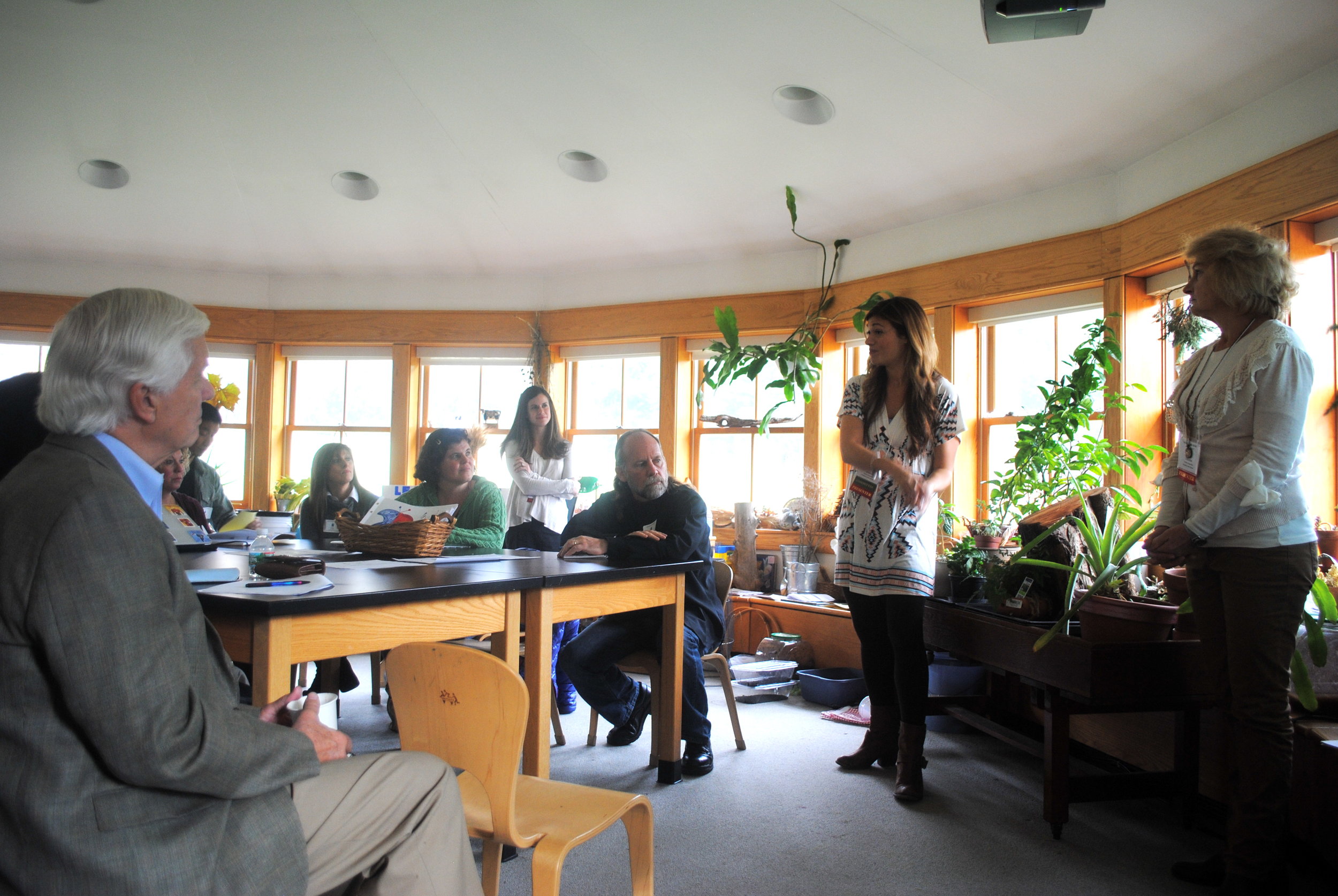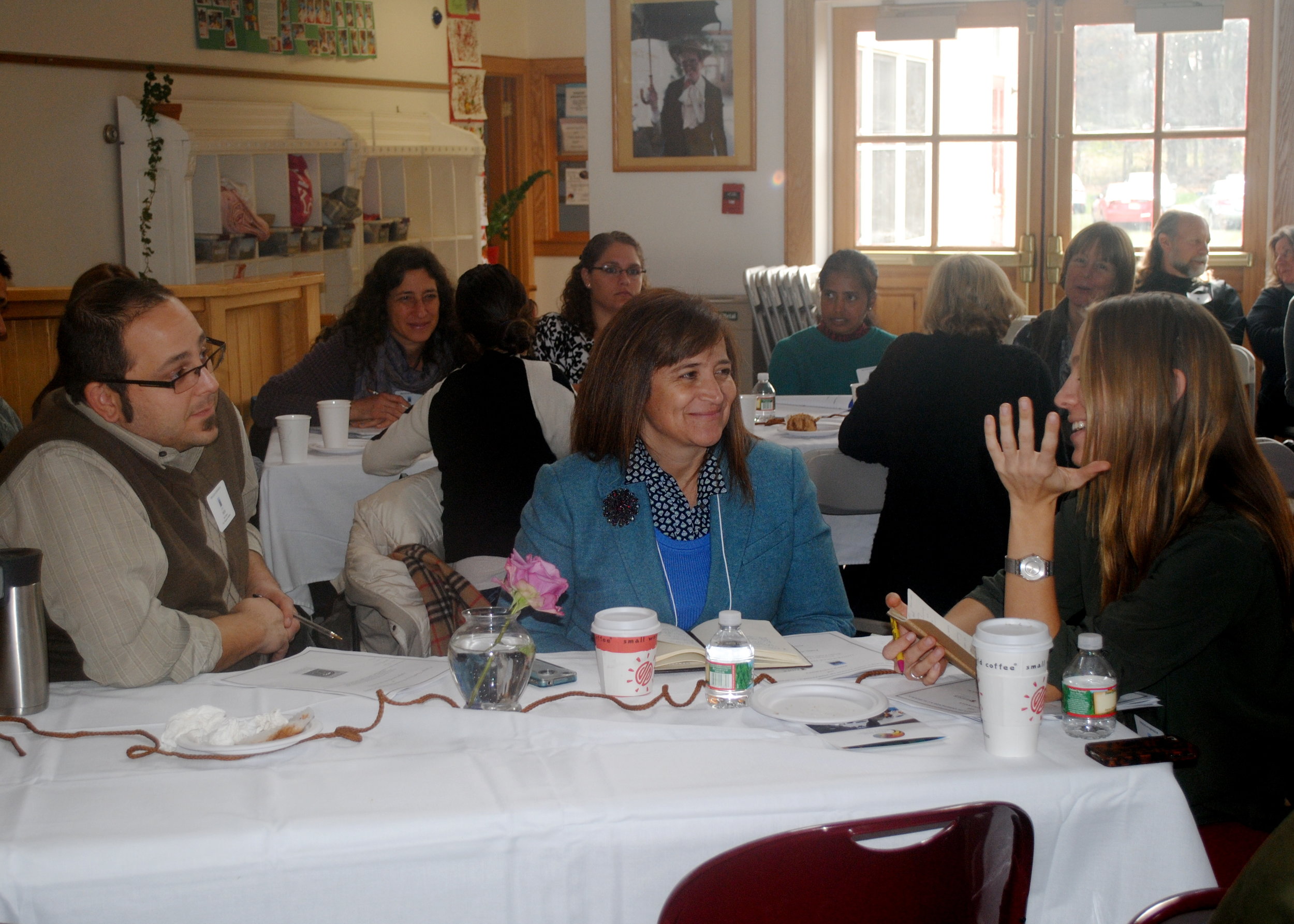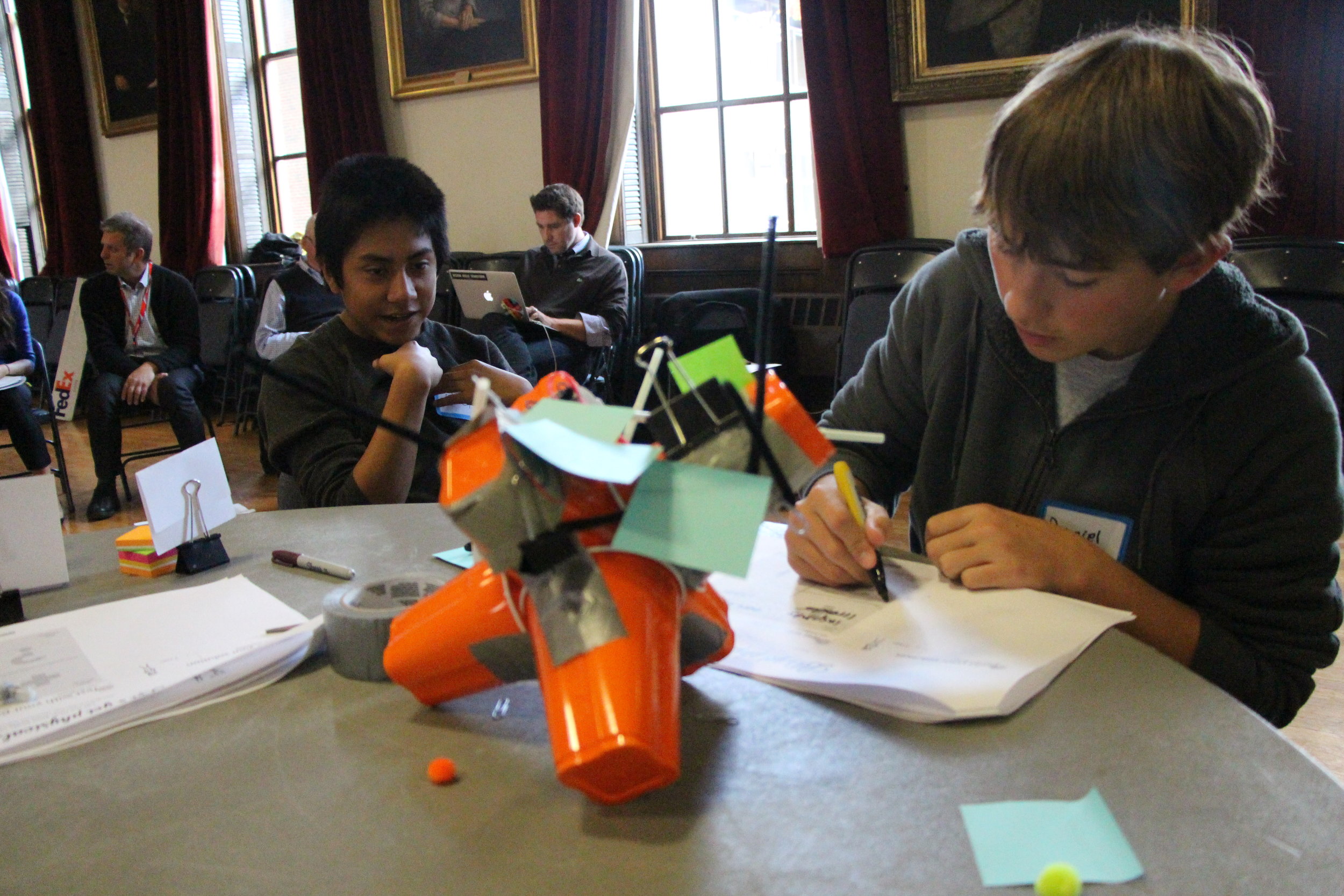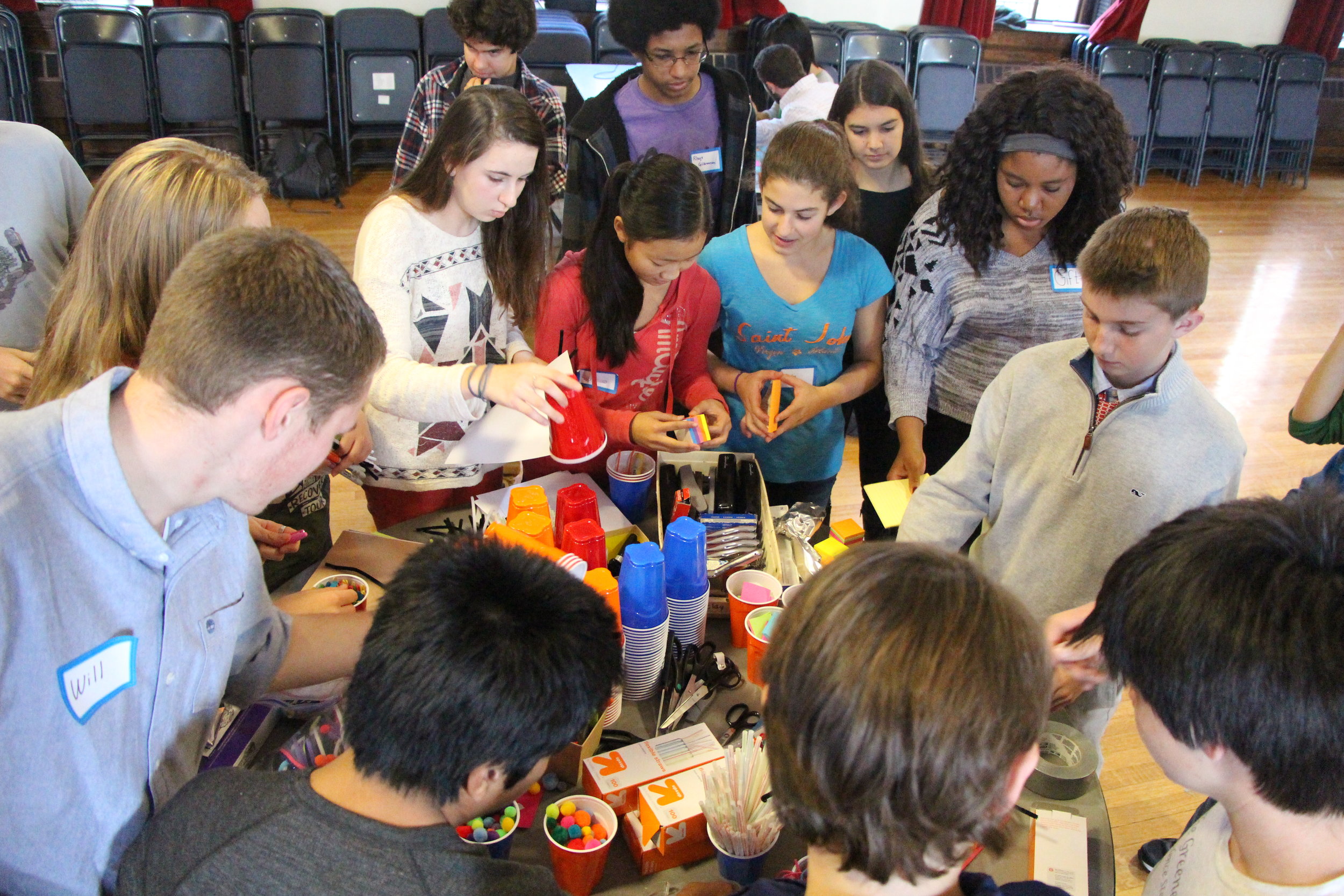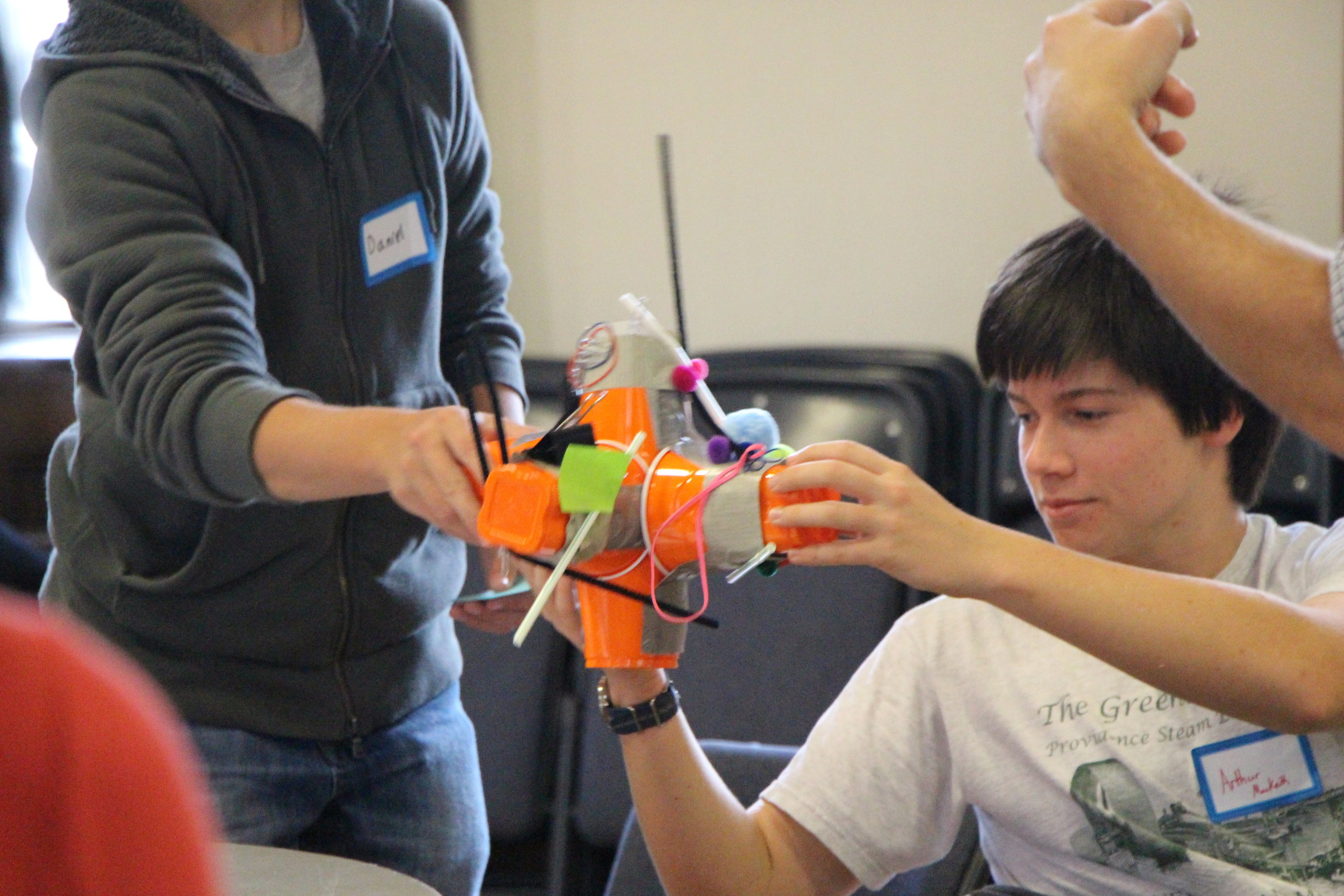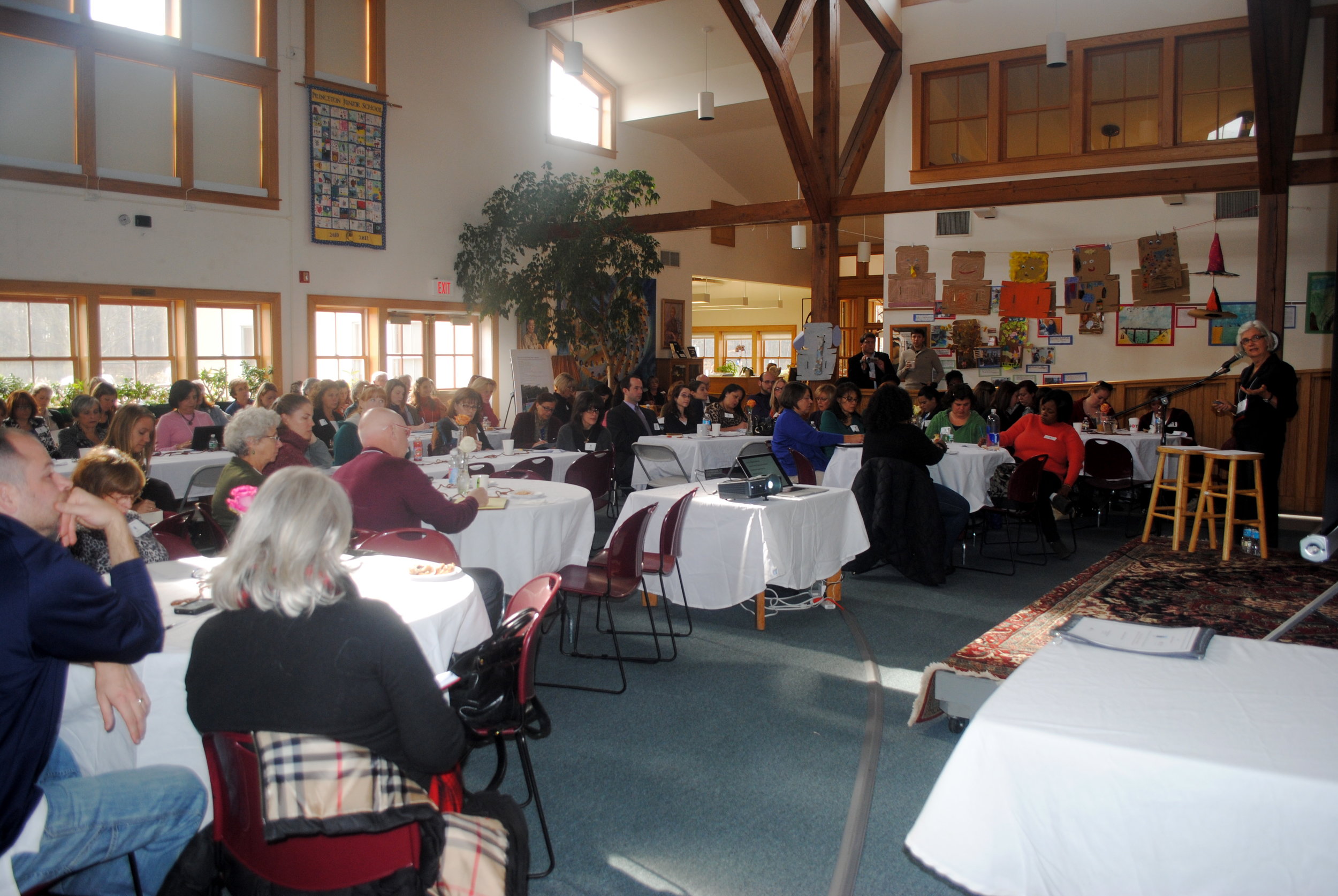 I had a chance to gather with folks at the Princeton Junior School in NJ for a great conference on November 15th. I took the train with Bob Dietzen, the City Neighbors Hamilton (CNH) Awesome 5th grade teacher, and was met at the train station by the CNH Fabulous 3rd grade teacher, Marilyn Mullen, along with Jessica DiLorenzo, past teacher of City Neighbors, and grand connector who brought us all to New Jersey for a conference about working with the principles and practices of the Reggio Emilia approach in American Schools.
Reggio Emilia is a small city in Italy with an amazing system of preschools that were founded by the villagers after World War II. They sold the tank left among the ruins of their town and decided to make a school that would teach children to be true to their humanity, a school that would prevent the next generation from ever choosing war.
I had a chance to gather with folks at the Princeton Junior School in NJ for a great conference on November 15th. I took the train with Bob Dietzen, the City Neighbors Hamilton (CNH) Awesome 5th grade teacher, and was met at the train station by the CNH Fabulous 3rd grade teacher, Marilyn Mullen, along with Jessica DiLorenzo, past teacher of City Neighbors, and grand connector who brought us all to New Jersey for a conference about working with the principles and practices of the Reggio Emilia approach in American Schools.
Reggio Emilia is a small city in Italy with an amazing system of preschools that were founded by the villagers after World War II. They sold the tank left among the ruins of their town and decided to make a school that would teach children to be true to their humanity, a school that would prevent the next generation from ever choosing war.
Louise Cadwell of the Cadwell Collaborative spoke to us about Reggio Emilia. She identified 6 essential components of the work in Reggio Emilia that can be inspirational for our work:
1. Relevant work and projects with students. (If you are in the city – study the city!)
2. Redefining the teachers role. (Facilitator and reseracher and provocateur.)
3. The practice of dialogue. (“Dialogue is a conversation with a center, not sides.”)
4. The multiple languages of learning. (How many ways can children express their knowledge?)
5. The effects of the environment on learning. (The classroom and school environment that allow us to do our best work.)
6. The learning community. (Teachers looking closely and reflecting on the complex work of teaching.)
We had a lot to learn together! Ashley Cadwell gave a great workshop on school environment and setting up the classroom. He shared lots of great ideas, one especially that I am bringing home on this train. “School can be like a home. Home speaks of relationships that are comfortable, organic and evolving.”
Juliana McIntyre Fenn, author of Wisdom at Play and founder of the thirty-year-old Princeton Junior School was there. She told us she is 78 years old. She told us to remember JOY in our work.
A great day! The train is pulling into Baltimore. Welcome Home.
Postscript:
Bobbi Macdonald is dynamic leader in progressive education and founder of City Neighbors Foundation in Baltimore. City Neighbors has founded three schools! City Neighbors High School , City Neighbors Charter School, and City Neighbors Hamilton. Click here to see Bobbi's TedX talk, and click here to hear her speak on the importance of the school environment. Bobbi, Ashley and Louise were invited to participate in a New Jersey Association of Independent Schools Symposium, Provocative Pedagogy, at Princeton Junior School a week ago. It was an honor to be there and to speak on a panel with Bobbi and other educational leaders from Rider University, Bank Street College of Education and Princeton Junior School. Ashley worked with two of the City Neighbors Schools last spring and wrote about it here.

